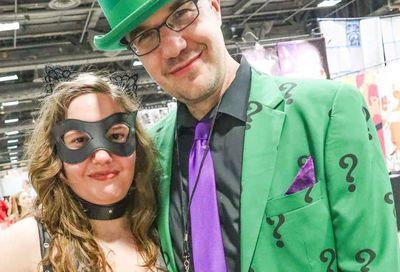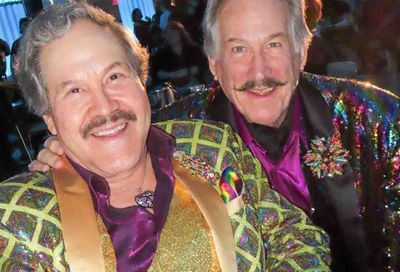50 Years of The Beatles: Ranking their Albums from 13 to 1
John Lennon, Paul McCartney, George Harrison and Ringo Starr — names forever etched into the world’s collective consciousness. They are the best-selling band in history both in America and worldwide. The Beatles changed everything. Over the course of 13 albums and assorted singles and EPs — roughly 10 hours of music — they produced the most vital and influential collection of pop/rock music in the history of the genre. All of these accomplishments were achieved despite the band’s fleeting existence as a recording entity. First single “Love Me Do” was released on October 5, 1962, and their final release as a band (after they had already broken up) was “The Long and Winding Road” on May 11, 1970. In under a decade, The Beatles forever changed music and pop culture, and in the process created a story that still fascinates and inspires.
February 9, 2014 marks the 50th anniversary of The Beatles’ legendary appearance on the Ed Sullivan Show, widely considered to be the moment they “conquered America.” Half a century later their music is as popular as ever. Wanna know the best-selling album in America and worldwide during the first decade of the 2000s? Eminem perhaps, or Britney Spears? Nah. It was The Beatles’ compilation “1,” a collection of their chart-topping singles which sold 11.5 million copies in the U.S. alone during that decade and has now sold approximately 31 million copies worldwide, and counting. The Beatles are untouchable, and people will be listening to their music when everyone reading this article is long gone.
The Beatles released 13 albums during their career, and let’s make it clear from the outset: The Beatles never released a bad album. Every single one of them is worth picking up, and all of them are pop/rock classics (with the possible exception of the soundtrack to “Yellow Submarine,” which can hardly be considered a Beatles album anyway). Their albums have been ranked many times before, and everybody has an opinion as to which is the best. There are no wrong answers here — strong arguments can be made for at least five of them. It’s always an interesting discussion, though, and it’s a great way to explore The Beatles back catalog and perhaps introduce the albums to younger fans that may only be familiar with the singles.
So with all that said, here is an attempt to rank the most important catalog of music recorded over the last half-century. Feel free to list your own ranking in the comments section below.
 13. “Yellow Submarine”
13. “Yellow Submarine”
“Yellow Submarine” lands in last place, and is really only partially a Beatles album. Released on January 13, 1969 as the soundtrack to the animated film of the same name, “Yellow Submarine” includes two previously released tracks (“All You Need is Love” and the title song), and all of Side Two consists of orchestral material scored by Beatles’ producer George Martin. The 4 previously unreleased Beatles songs are mostly outtakes and throwaways. There is one great nugget in the mix, though — John Lennon’s “Hey Bulldog,” a searing rocker with a great vocal performance and killer guitar riff. The rest of the material is fairly dismal. George Harrison contributed two songs: “Only a Northern Song,” which was a reject from “Sgt. Peppers,” and the long, shambolic mess “It’s All Too Much.” Paul contributed the trite little ditty “All Together Now,” which is one of the most inconsequential recordings the band ever made. Still, it’s worth picking up for “Hey Bulldog,” and George Martin’s lovely orchestral work on Side Two.
 12. “Please Please Me”
12. “Please Please Me”
The Beatles’ first album was famously recorded in one long session on February 11, 1963, and it was released slightly over a month later on March 22, 1963. “Please Please Me” is approximately half original compositions by Lennon and McCartney, and half covers. The band chose songs they had been performing live with regularity, so they knew the material well and producer George Martin was able to get solid performances out of them with a minimal amount of hassle. There is a palpable exuberance to these recordings, especially on the album’s two classic bookends: the raucous opener “I Saw Her Standing There,” and the finale of “Twist and Shout,” with Lennon’s famous throat-shredding vocal and Paul’s excited “yeah!!” at the very end. The album also includes their first every single, the simple but endearing “Love Me Do,” and its b-side “P.S. I Love You.” The title track became their first #1 single in the U.K. and, although “Love Me Do” is always remembered as their first single, it was really the success of “Please Please Me” that launched them into the stratosphere first in the U.K., and eventually around the world. The covers are a bit of a mixed bag– some are more successful than others. Apart from “Twist and Shout,” the most successful cover is probably their take on “Baby It’s You,” which had recently been a big hit for The Shirelles. (They also covered The Shrelles “Boys” with Ringo on vocals, which seems an odd choice.) The original compositions are generally better; songs like “Ask Me Why” and “Do You Want to Know a Secret” may be simple guitar pop, but they have an undeniable charm. Listening to the basic, straightforward recordings on “Please Please Me,” it’s difficult to fathom that only three years later the band would be recording experimental classics like “Eleanor Rigby,” “Tomorrow Never Know” and “Taxman” — an astonishing artistic progression in an incredibly short amount of time.
 11. With the Beatles
11. With the Beatles
To capitalize on their mounting success, The Beatles released their second album “With the Beatles” on November 22, 1963, a mere seven months after “Please Please Me.” “With the Beatles” is another collection of Beatles’ originals mixed with a handful of covers. There is a definite progression in John and Paul’s songwriting. The general practice (although not consistently followed) at the time in the music industry was that singles often weren’t included on the albums, so songs like “I Want to Hold Your Hand” and “She Loves You” aren’t here. That said, album tracks like “All My Loving” and “All I’ve Got to Do” surely would have been smash hits in their own right. Most of the album is similar in style to their debut — straightforward, highly melodic guitar pop with terrific harmonies. Paul was already showing his fondness for more diverse material, like his take on “Till There Was You” from the Broadway musical The Music Man. The covers are again hit-and-miss, with “Devil In Her Heart” probably the weak point, and a ferocious take on Chuck Berry’s “Roll Over Beethoven” a definite high point. “Hold Me Tight,” a leftover from the “Please Please Me” sessions, is one of the band’s best early rockers, and John’s take on Smokey Robinson’s “You Really Got a Hold On Me” is stellar. “With the Beatles” also marks the first appearance by George Harrison as a songwriter, as he contributed the rather dour “Don’t Bother Me.” “With the Beatles” continued the formula of their debut, and while it’s a far cry from their best work it is still an essential classic, and a landmark of early ‘60s guitar rock.
 10. Let It Be
10. Let It Be
The idea behind “Let It Be” was to get the band together, film the creative process as they composed and recorded new material, and stick with a very back-to-basics approach with no studio overdubs. It would then culminate with a live performance of the new material as the grand finale. Of course, tensions were so high at this point between the band members that it didn’t quite work out the way they intended. The Beatles recorded hours of material, including numerous covers and improvisations. They issued a couple singles (“Get Back”/”Don’t Let Me Down” was a #1 hit), and a version of the album was compiled for possible release, but the band was unhappy with it and the project lay dormant until after their next album “Abbey Road” was recorded and released. Lennon hired legendary producer Phil Spector to make something of the tapes and put together a coherent album to go with the upcoming film release of the footage taken during the recording, also to be called “Let it Be.” Spector had a daunting task on his hands, and he’s been widely criticized for his treatment of the material, especially his gaudy string and vocal arrangement on “The Long and Winding Road.” But the reality is that he had to do something to cover up the mistakes on what were really just demos and studio run-throughs never intended to be final releases. “The Long and Winding Road,” for example, features John Lennon playing a very ragged and mistake-filled bass part, which Spector covered up with strings. The material was good but not up to the Beatles’ usual standards. There are three undeniable classics, all by McCartney — the solemn “Let it Be,” the sadly wistful “The Long and Winding Road,” and the old-school rocker “Get Back.” Paul McCartney flew into a rage when he heard Spector’s treatment of his songs and unsuccessfully tried to stop the release of the album. When he was unable to do so, he rush-released his first solo album “McCartney” so that it would come out before “Let it Be” — it hit the shelves on April 17, 1970, and Phil Spector’s version of “Let it Be” was finally released on May 8, 1970. The material finally got the treatment it needed to become a really coherent album years later with the 2003 release of “Let it Be… Naked,” a project overseen by Paul McCartney, and a far superior listening experience than the original release.
 9. Beatles For Sale
9. Beatles For Sale
The Beatles were weary after constant recording and touring, but in their spare moments the record company demanded another album. Fortunately their songwriting skills were improving by leaps and bounds. The band was starting to pen more introspective material and were using more acoustic guitars, influenced by their infatuation with Bob Dylan. There are some classics on “Beatles for Sale,” especially the opening trio of “No Reply,” “I’m a Loser and “Baby’s in Black.” Eight Days a Week” was a huge single in America, and “Every Little Thing,” with its distinctive timpani, is another high point. Unlike “A Hard Days’ Night,” they didn’t have enough original material for a full album (with two of the strongest tracks, “I Feel Fine” and “She’s a Woman,” taken as a single), so there were a handful of covers. A couple of them are solid, especially “Kansas City” and their take on Buddy Holly’s “Words of Love,” but a few of them were throwaways: “Mr. Moonlight,” “Honey Don’t” and “Everybody’s Trying to Be My Baby.” “Beatles for Sale” showed the Beatles on the cusp of the creative genius that would continue to develop, but the demands of touring and limitations of time didn’t allow them to stretch that greatness over the span of an entire album. That would soon change as they stopped touring and started focusing more on their song-craft and recording.
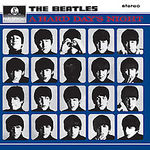 8. A Hard Day’s Night
8. A Hard Day’s Night
Released on July 10, 1964 as the soundtrack to The Beatles first (and best) film, “A Hard Days Night” is the best of the Beatles’ early material. Opening with that famous chord (G7sus4, although — like nearly everything involving The Beatles — the exact composition of the chord is subject of intense debate) on the propulsive title song, “A Hard Day’s Night” was the first Beatles album to include all originals — something that was unprecedented among guitar bands of the time. Their songwriting abilities were improving, and the album is a deft mix of rockers and ballads. “And I Love Her” and “If I Fell” are two of the loveliest songs of their career and showed more emotional depth than their earlier ballads. The group was also improving as musicians and vocalists — their harmonies are tighter and more creative. The album contains two #1 singles — the title song, and Paul’s ingeniously catchy “Can’t Buy Me Love.” It also features other classics like the motoric rocker “Any Time at All” (a sure-fire #1 had it been released as a single), “Things We Said To Day” and the edgy but somewhat misogynistic rocker “You Can’t Do That.” The album’s finale, the haunting acoustic “I’ll Be Back,” foreshadows the direction they would take for much of their next two albums.
 7. Help!
7. Help!
The soundtrack to The Beatles’ second film, the goofy comedy “Help!”, was released on August 6, 1965. Imagine an album containing three of the most iconic singles of an entire decade: “Help!”, “Ticket to Ride,” and “Yesterday.” The title-track is a frantic rocker written by John which became an immediate smash. “Ticket to Ride” was the finest track the band had yet recording, with brightly chiming guitar and enigmatic lyrics that were deeper and miles away from the songs the band was recording only a couple years prior which seem trite in comparison. Ringo Starr delivered a brilliant drum performance on the track. “Yesterday” was another important departure for the band, just Paul on vocal and guitar and a subtle George Martin-arranged string section. All three of these classics were #1 singles, and the rest of the album (for the most part) stands up nearly as strong. “You’ve Got to Hide Your Love Away” was a landmark song for John Lennon, an overt move to more acoustic and introspective material. There’s also the fantastic “You’re Going to Lose That Girl” with its exciting vocal arrangement, and Paul’s beautifully conceived “I’ve Just Seen a Face,” with a complex guitar arrangement and an almost country and western vibe. There are a couple tracks that don’t stand up with the rest — Paul’s rather heartless “Another Girl,” the rather slight “I Need You” contributed by Harrison, and especially the messy cover of “Dizzy Miss Lizzy” that closes the album; an anticlimactic ending to a great album, which is a mistake they would repeat on their next album “Rubber Soul.”
 6. Magical Mystery Tour
6. Magical Mystery Tour
Released on December 8, 1967, mere months after “Sgt. Pepper’s,” The Beatles’ “Magical Mystery Tour” is most definitely “Sgt. Peppers Lite.” They continue the psychedelic sound of “Sgt. Peppers,” but — with one notable exception — it has none of the careful studio magic and attention to detail of its classic predecessor. That’s not to say it’s a bad album. Side one are songs recorded for a TV movie project that was Paul McCartney’s brainchild after the death of longtime producer Brian Epstein as a way to give the band direction. The film was a disaster, but the soundtrack yielded some great material. The title song seems a transparent attempt to write another “Sgt. Peppers,” but “A Fool on the Hill” is a classic McCartney ballad with a great vocal performance. The instrumental “Flying” is a lovely, gently gliding and dreamy piece that works well within the context of the album. And of course there is “I Am the Walrus,” the only song on Side One of the album that shows the same brilliant experimentation and careful studio work as “Sgt. Peppers.” It’s rapid-fire lyrics are some of Lennon’s best, and George Martin’s production work and string arrangement made for a truly classic recording. Side Two is a collection of some of the band’s recent singles. “Strawberry Fields Forever” and “Penny Lane” both predate “Sgt. Peppers” so it’s odd that they were included here, but they are both essential masterpieces and their presence certainly bolsters the album. “Hello Goodbye” (a #1 single released in November 1967) is also included, as well as the shambolic sing-a-long “All You Need is Love” (another #1 single) and its odd but strangely affecting b-side “Baby You’re a Rich Man,” which became a Top 40 hit in its own right. “Magical Mystery Tour” is an unusual combination of material recorded for a specific project (Side One) and a random collection of singles thrown together to fill up Side Two. Fortunately those random singles happen to include some of the band’s best.
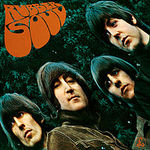 5. Rubber Soul
5. Rubber Soul
The Beatles’ first unquestioned masterpiece was released only four months after “Help!”, on December 3, 1965. “Rubber Soul” marked a huge leap forward in the band’s progression in every aspect, from songwriting, to production, to vocal performances. It opens with the upbeat rocker “Drive My Car” and then goes right into John’s brilliantly enigmatic “Norwegian Wood,” which introduced most of the Western world to the sitar. “Norwegian Wood” was so Dylan-influenced as to almost be considered an homage. “Nowhere Man” (a major hit in America) introduces a far more introspective side to John Lennon’s songwriting, as does the sublime, elegiac “In My Life.” “Girl” is another brilliant moment by John; his vocal performance on this song shows Lennon had learned the power of drama and intensity and the importance of phrasing, and is miles away than anything he did only a couple years earlier. There’s also one of the most successful of Paul’s genre exercises, the exquisite “Michelle” which is another one of those songs that would have ended up on the “1” album had it been issued as a single. Then there are the stellar contributions by George Harrison. The angry, fuzz-toned “Think for Yourself” shows a significant step forward in his confidence as a songwriter, as does the beautifully melodic “If I Needed Someone.” “Wait,” a leftover from “Help!”, is an urgent rocker that adds spark to Side Two. There is only one blight on “Rubber Soul,” but it’s a big one: the closing track, “Run For Your Life.” A song even Lennon later admitting to hating, “Run For Your Life” features the bitterest, nastiest, most misogynistic lyric of the band’s career, and a painful guitar solo. It’s a shocking conclusion to an album otherwise so sublime and carefully crafted: a sad miscalculation, but not enough to ruin one of the great albums of the ‘60s and a must-own for any fan of pop music. “Rubber Soul” is already loaded with classics, and just imagine if they had included the duo of “Day Tripper”/ “We Can Work it Out” which was snagged away to be released as a single (and “We Can Work it Out,” one of the great songwriting and vocal collaborations between Lennon and McCartney, was another #1 in the U.S.) “Life is very short, and there’s no time for fussing and fighting my friend….”
 4. Sgt. Pepper’s Lonely Hearts Club Band
4. Sgt. Pepper’s Lonely Hearts Club Band
The epitome of rock’s psychedelic era, “Sgt. Pepper’s Lonely Hearts Club Band” amazed and astounded fans and critics when it was released on June 1, 1967. The studio mastery and experimentation exhibited on this album was revolutionary. The Beatles, with the notable assistance of producer George Martin and engineer Geoff Emerick, created an album that forever changed what pop music could be. Since they had stopped touring, The Beatles no longer had to concern themselves with recording music that would have to be recreated on stage, so they indulged in every whimsy and fancy that crossed their minds. The first songs to emerge from these sessions were the single “Penny Lane”/”Strawberry Fields Forever,” two essential classics that foreshadowed the direction of the album. Some of the most startling and brilliant effects include the wildly kaleidoscopic organs on the deceptively ominous “Being for the Benefit of Mr. Kite,” and of course the chaotic orchestral sequences in “A Day in the Life,” which is perhaps The Beatles finest single achievement. Everything about the song — from Lennon’s detached vocal delivery of the evocative lyrics, to Ringo’s inventive drum-work, to Paul’s bouncy midsection, and of course that iconic final, massive piano chord that closes the album with a long fade to silence — is amazing. “A Day in the Life” is one of the great masterpieces of pop music history. “She’s Leaving Home” is a heart-rending ballad with a gorgeous vocal and string arrangement. The exotic, dreamy “Within You Without You” is one of George’s most divine creations, and certainly by far the best of his experiments with Indian-flavored music. “With a Little Help From My Friends” is a perfect pop song and the Ringo’s earnest vocal is the best he ever delivered on a Beatles track. The blazing rocker “Good Morning, Good Morning,” with its sizzling guitar solo, propulsive horn section and a fantastic lyric and vocal by Lennon is one of the album’s sometimes overlooked high points. So if the album is so revolutionary and great, why isn’t it #1? Well, as mentioned in the introduction to this piece, a strong argument could be made for any of these Top 5 to be the best. But the reality on “Sgt. Pepper’s,” especially compared with “Revolver,” is that some of the songs just aren’t on the same level of greatness. “When I’m Sixty Four” is a cute little novelty, but it might have been better served as a b-side. “Lovely Rita” has some wonderful vocal effects, but as a song it’s not really all that interesting. “Getting Better” and “Fixing a Hole” are good, but ultimately not really among the best of The Beatles’ cannon. Had “Strawberry Fields Forever” and “Penny Lane” been included instead of, say, “When I’m Sixty-Four” and “Lovely Rita” than it might unquestionably be #1. All of these top albums are so great that it gets to be very difficult and subjective to rank them, and despite its place at the top of many critics’ lists, and its standing as one of the most influential and important albums in rock history, when it comes down to it “Sgt. Peppers Lonely Hearts Club Band” may be The Beatles finest studio achievement in terms of experimentation and purely dizzying sonic marvels, but it’s not their best album overall.
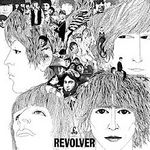 3. Revolver
3. Revolver
Released on August 5, 1966, “Revolver” was yet another huge step forward for the band. The Beatles’ prior album, “Rubber Soul,” was largely straightforward (albeit brilliant), mostly acoustic-based pop/rock The experimentation that the band dipped their toes into on “Rubber Soul” explodes on “Revolver” in a major way. Opening with that famous count-in on Harrison’s acerbic rocker “Taxman,” “Revolver” covers astonishingly diverse stylistic territory in just 35 minutes. Some of The Beatles’ finest moments are on “Revolver.” McCartney’s talent as a lyricist reached a new high with “Eleanor Rigby,” a sad tale of a lonely spinster who died alone and friendless, sung over George Martin’s haunting string arrangement. The Beatles again were changing and expanding the boundaries of what pop/rock music could be, and covering subject matter far beyond the simple love songs of their recordings from only a few years prior. McCartney also shines on the gorgeous “Here, There and Everywhere,” one of his finest melodies and featuring some of the most heavenly background vocal harmonies on any Beatles track. Another McCartney ballad is the heartbreaking “For No One,” sad, solemn and dramatic as it reflects on the end of a relationship. Paul’s other major contribution is the high-energy “Got To Get You Into My Life,” a soulful horn-laden ode to Motown. Lennon contributes three of his finest songs — the loopy psychedelic rocker “She Said, She Said,” the dreamy “I’m Only Sleeping” and, of course, the album’s superb finale, the wildly experimental “Tomorrow Never Knows,” which is still as mind-blowing now as it was 48 years ago. There are a couple moments that don’t quite live up to the rest of the album — particularly Harrison’s discordant “I Want to Tell You” — but overall as a sheer collection of songs it’s very very difficult to beat “Revolver.” It raised the bar for everybody else trying to compete with The Beatles and is seen by many fans and critics as their finest album overall, and it’s hard to argue that point. When it comes down to the top 3 or 4, it really comes down to personal preference. They are all essential, must-own classics.
 2. The Beatles (White Album)
2. The Beatles (White Album)
Released on November 22, 1968, five years to the day from their debut, “The Beatles” is commonly referred to as “The White Album” because of its stark white cover, a striking contrast to the ebullient color of the band’s prior two albums. The Beatles’ first and only double-album, “The White Album” is a glorious mess; a patchwork of styles and personalities that veers in just about every direction possible. Each band member follows whatever path their ideas take them, with no consideration to the style or how it might fit together with what the other members were doing, apart from the notion to get “back to basics” and abandon the psychedelic sound of the last few albums. “The White Album” was preceded by a couple of The Beatles’ finest singles: “Lady Madonna” and “Hey Jude/”Revolution,” and those songs certainly veered away from the psychedelica in which they had been immersed since “Revovler.” To some degree, it was a collection of solo recordings with occasional contributions by the other band-mates. “The White Album” is a roadmap for each of The Beatles’ solo careers: if you separate the album into parts by its author and compiled a disc of only those songs, it would be a reasonable approximation of what their solo albums would generally sound like. There are blazing rockers like “Back in the USSR,” “Birthday,” “Helter Skelter” and “While My Guitar Gently Weeps.” There are delicate ballads like “Julia,” “I Will,” “Long Long Long,” “Blackbird,” and the absolutely exquisite “Dear Prudence.” McCartney indulges in his love of old-school genre exercises on tracks like “Martha My Dear,” “Honey Pie,” “Rocky Raccoon,” and “Ob-La-Di, Ob-La-Da.” John contributes some of the most incisive, edgy tracks of his tenure as a Beatles: the brilliantly wicked “Happiness is a Warm Gun,” “I’m So Tired,” “Sexy Sadie,” the vaguely sinister “Cry Baby Cry” and “Glass Onion.” There are shambolic, ragged tracks that never would has passed muster during the era of “Rubber Soul” through “Sgt. Peppers,” when everything was so carefully and immaculately produced and performed — most notably Ringo’s amiable, goofy “Don’t Pass Me By,” John’s ragged, messy “Yer Blues,” (check out that terrible edit at the 3:07 point following that absolutely ear-splitting guitar solo), and the campfire sing-a-long “The Continuing Story of Bungalow Bill.” There are also moments of studio experimentation, like Paul’s odd little exercise in vocal layering in “Wild Honey Pie,” or John’s famous sound collage “Revolution 9.” “The White Album” has it all — it’s The Beatles unmasked, doing whatever it is they feel like doing without any concern whatsoever for commercial ramifications, and it’s fascinating to hear the band unleashed from the shackles of market concerns (although the album, of course, ended up doing very well). There were no singles from the album at the time, but some of the tracks have become widely regarded as among their best recordings. “The White Album” is eccentric, a little demented at times, and some things work better than others. Its diversity and rawness is its greatest strength, and while individually many of the songs don’t stand up to their best work (and for this reason it’s extremely hard to rank), collectively it’s an amazing listening experience. The sum of its parts makes “The White Album” one of the great rock and roll albums of all time, a wonderful musical journey that set the standard for every double album that would come after it.
 1. Abbey Road
1. Abbey Road
The Beatles’ final album, and finest hour, “Abbey Road” is the ultimate rock & roll swan-song. In retrospect it’s hard to listen to “Abbey Road” and not get the feeling that the band knew it was the end, and they wanted to come together and create something special. The production is rich and so warm it practically glows. Listen to it on vinyl on a good stereo, and you can feel the resonance of the music surround you. “Abbey Road” opens with one of the best singles the band ever recording: the slow, sinister “Come Together.” Lennon’s bluesy rocker begins with that unforgettable combination of Paul’s remarkably fluid bass-line, Ringo’s rolling drum fill and John hissing “shoot me” into the microphone. The song then goes into a series of verses with arrestingly cryptic, vaguely disturbing non sequitur imagery before concluding with John’s repeated calls to “Come Together.” Next there’s a cascade of drums, and George Harrison’s extraordinary beautiful ballad “Something” unfolds — the finest song of his career, and a marvel of production work by George Martin. “Maxwell’s Silver Hammer” is Paul’s first track on the album, and it has sometimes been singled out as being inconsequential, but in fact it’s cunningly conceived and morbidly charming. Another McCartney track follows, his doo-wop pastiche “Oh Darling!”, another of his genre exercises but one of the best thanks to his full-throttle, completely convincing vocal performance and an outstanding arrangement. Ringo Starr’s “Octopus’s Garden” is a charming country & western-tinged sequel of sorts to “Yellow Submarine,” and features some lovely imagery, studio effects that add a bit of levity to an otherwise rather dark album, and a terrific background vocal arrangement. Side One ends with the lumbering guitar epic “I Want You (She’s So Heavy),” an obsessive, feverish piece that Lennon wrote for Yoko Ono that builds and builds to an ear-splittingly powerful crescendo before suddenly cutting out to silence. With its minimal lyrics sung with wild abandon by Lennon, “I Want You (She’s So Heavy)” vividly captures the maddening intensity of feeling that Lennon had for Ono. Side Two begins with another of Harrison’s finest moments as a Beatle, “Here Comes the Sun.” With its delicate and complex acoustic guitar part, featuring those famous descending runs, and a lovely counter-melody played by Harrison on an early Moog synthesizer, “Here Comes the Sun” is a daydream ray of optimism to try and rise about the venomous acrimony that had descended upon the band during their later years (but that acrimony would win out in the end, and of course the daydream was just that… and by this point it was in the process of a bitter ending.) The haunting, exquisite multi-tracked three-part harmonies of “Because” follows, an extraordinary recording that was written by Lennon and inspired by Yoko Ono playing Beethoven’s “Moonlight Sonata” backwards on a piano.
Then the heart of the album starts — “The Long Medley.” Beginning with Paul’s bitter “You Never Give Me Your Money,” “The Long Medley” comprises snippets of half-completed songs, many of which had been laying around for some time and had been demoed on various occasions for both “The White Album” and during the sessions that would yield “Let it Be.” The medley is brilliantly arranged and sequenced, going from the solemn beauty of “Sun King” into edgy rockers like “Mean Mr. Mustard” and “Polythene Pam.” The medley is like boulder careening downhill and culminating with “The End,” the iconic track that includes Ringo’s only drum solo as a Beatle, and featuring McCartney, Harrison and Lennon (in that order) each taking turns on three alternating guitar solos before descending into the famous, wistful, piano-based conclusion… “And in the end the love you take is equal to the love you make,” followed by a sighing instrumental flourish that couldn’t be a more perfect ending not only to the album, but to the greatest catalog of pop music ever recorded. Then, after 20 seconds of silence, Paul’s acoustic coda “Her Majesty” pops up for one last bit of Beatles charm, before finally they fade to black and the dream ends.
Released on September 26, 1969, “Abbey Road” would go on to become The Beatles’ biggest-selling album, a place that it still holds today. Of all the magic The Beatles created over their 8 year career, there is something about “Abbey Road” that trumps them all. Maybe it’s the overarching aura of sadness, finality, and inevitability. Maybe it’s the ending of a dream. Maybe it’s the sheen of the production, the surreal beauty of the harmonies, the utter perfection of the sequencing. Ever the cover is perfect. The Beatles were many things — from simple guitar rockers, to contemplative acoustic-based songwriters, to psychedelic experimentalists, to contrarian individualists, but on “Abbey Road” each of their personalities combine in a way that is perfect from start to finish.
Other Recent Articles:
Classic Album Revisited: The Fixx “Phantoms”
Ranking David Bowie’s Albums 27 to 1
Support Metro Weekly’s Journalism
These are challenging times for news organizations. And yet it’s crucial we stay active and provide vital resources and information to both our local readers and the world. So won’t you please take a moment and consider supporting Metro Weekly with a membership? For as little as $5 a month, you can help ensure Metro Weekly magazine and MetroWeekly.com remain free, viable resources as we provide the best, most diverse, culturally-resonant LGBTQ coverage in both the D.C. region and around the world. Memberships come with exclusive perks and discounts, your own personal digital delivery of each week’s magazine (and an archive), access to our Member's Lounge when it launches this fall, and exclusive members-only items like Metro Weekly Membership Mugs and Tote Bags! Check out all our membership levels here and please join us today!


















